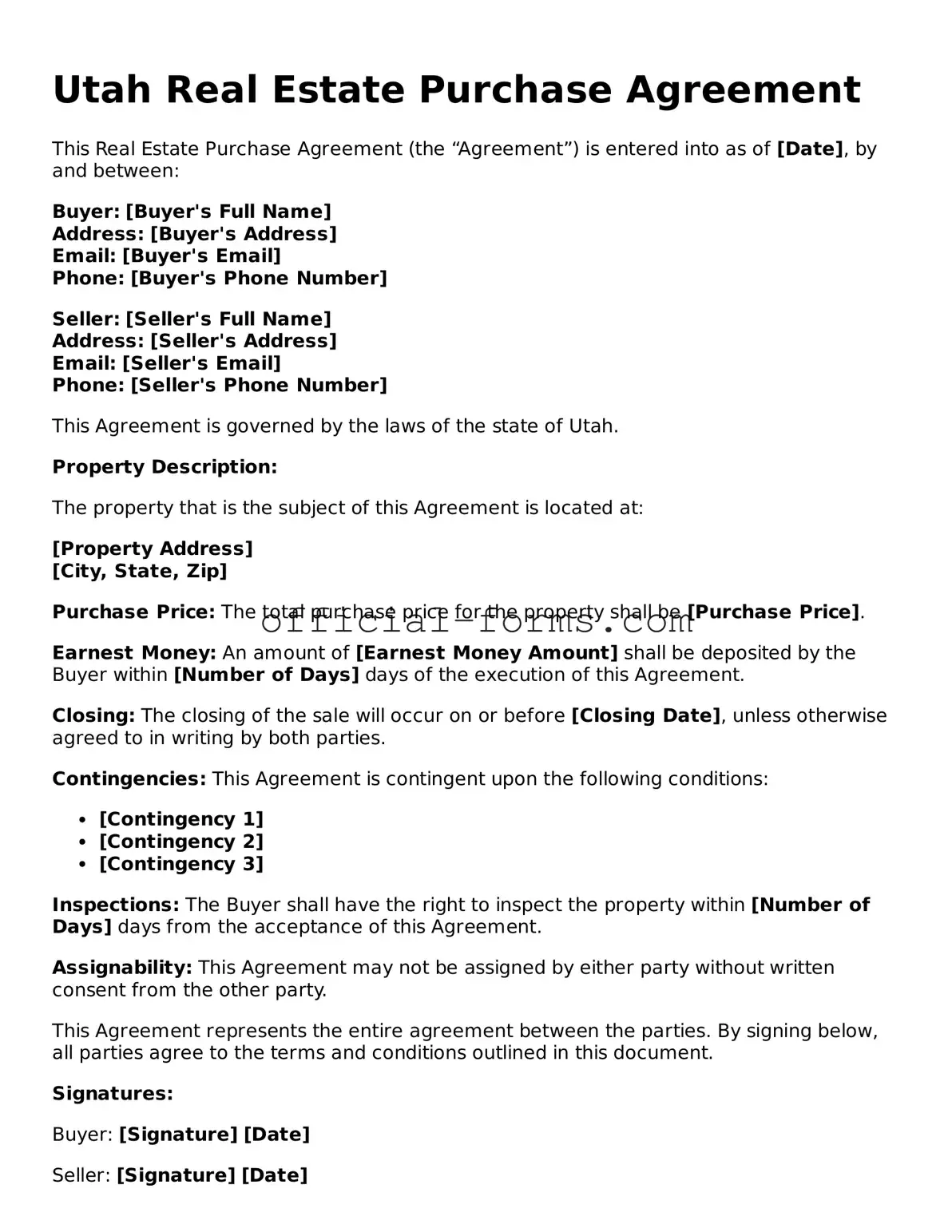Filling out the Utah Real Estate Purchase Agreement can be a daunting task. Many buyers and sellers make common mistakes that can lead to misunderstandings or complications later on. One frequent error is failing to include all necessary parties in the agreement. Both buyers and sellers must be clearly identified to avoid confusion about who is legally bound by the terms.
Another mistake is overlooking the importance of accurate property description. A vague or incorrect description can lead to disputes about what is actually being sold. It's essential to include the full address, legal description, and any relevant details that define the property. This ensures that both parties are on the same page regarding the transaction.
Many individuals also neglect to specify the purchase price clearly. While it may seem straightforward, ambiguity can create issues down the line. The price should be stated clearly, and any contingencies or conditions should be outlined to prevent misunderstandings.
Failure to address contingencies is another common oversight. Buyers often assume that their offer will be accepted without any conditions. However, including contingencies—such as financing or inspection requirements—protects the buyer and clarifies expectations for both parties.
Additionally, people sometimes forget to include the earnest money deposit. This deposit shows the buyer's commitment to the purchase. Without specifying the amount and terms of this deposit, the agreement may lack the necessary assurances for the seller.
Not understanding the timeline for closing can lead to frustration. Buyers and sellers should clearly outline deadlines for inspections, financing, and closing dates. This clarity helps keep the transaction on track and prevents delays.
Some individuals fail to review the terms related to repairs or improvements. It's important to specify who is responsible for repairs before closing. This can save both parties from potential conflicts and misunderstandings about property condition.
Another mistake is not considering the implications of any included fixtures or personal property. Buyers may assume certain items are included in the sale, while sellers may intend to take them. Clearly listing what is included or excluded can prevent disputes.
Finally, many people overlook the importance of signatures. The agreement is not legally binding without the proper signatures from all parties involved. Double-checking that all necessary signatures are present can save time and trouble later.
By being aware of these common mistakes, buyers and sellers can navigate the Utah Real Estate Purchase Agreement process more smoothly. Attention to detail and clear communication are key components of a successful transaction.
